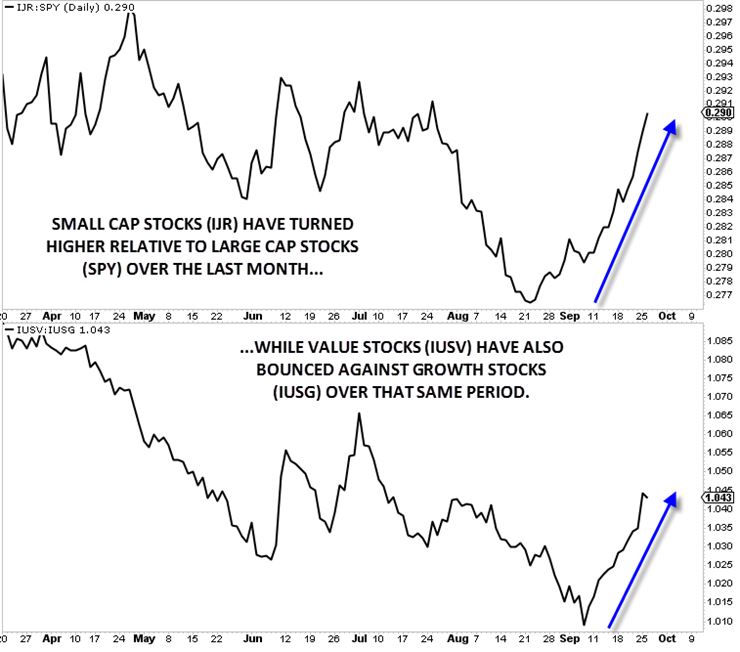Technology stocks are the leading sector year-to-date, but you would never guess it based on the price action on Monday. The SPDR technology sector ETF, NYSE:XLK, dropped by more than 1% that day, dragged down by previously high-flying stocks like Apple (NASDAQ:AAPL), Microsoft (NASDAQ:MSFT), Facebook (NASDAQ:FB), and Alphabet (NASDAQ:GOOGL).
This extends the period of relative underperformance from the technology sector. Some of the recent moves can be chalked up to company specific developments; namely, rumors about AAPL's watch and disappointing early sales of the iPhone 8 have hit the stock, while pressure from the Russian election meddling investigation is increasing the stress on FB.
While we try not to make too much of a single day's price action, there are some under-the-surface developments that suggest Monday's drop in tech stocks could be the start of a new trend. So far, 2017 has been the year of "rotation" in the US stock market: every time a market-leading sector stumbles, another new group of stocks steps in to pick up the slack. Lately, that sector has been energy stocks.
Another factor driving the relative underperformance of tech stocks of late is, well, factors. In investing parlance, a "factor" is an attribute of a security that is associated with higher returns. The two most commonly acknowledged factors (beyond the ubiquitous "market" factor) are size and value. In essence, the stocks of smaller and less expensive companies have displayed higher returns than the stocks of larger and more expensive companies over the long term.
For most of this year, however, that tendency hasn't held true. Year-to-date, large capitalization stocks (SPDR S&P 500 (NYSE:SPY)) have outperformed small capitalization stocks (iShares Core S&P Small-Cap ETF (NYSE:IJR)) by 6%, and relatively expensive "growth" stocks (iShares Core US Growth Fund (NASDAQ:IUSG)) have outperformed value stocks (iShares Core US Value ETF (NASDAQ:IUSV)) by nearly 10%. As the ratio charts below show though, those trends have abruptly reversed over the last month:

Source: Stockcharts.com
It remains to be seen whether the recent outperformance of smaller, cheaper companies will continue, but it's important to remember that, on average and over long time horizons, small-cap value companies have outperformed their large-cap growth rivals.
In other words, when it comes to factor performance, it's the first eight months of this year that are the anomaly, not the price action over the last month. Don't be surprised if the recovery in small-cap value stocks stretches further from here.
